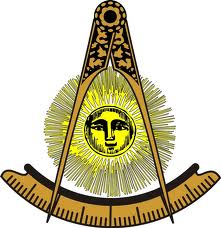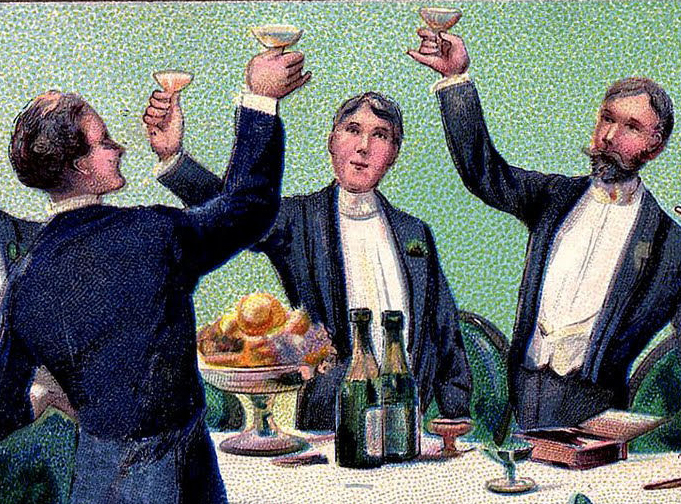
Living Past Masters
1952 - Irwin N. Duncan
1958 - Buford E. Cline
1960 - Donald L. Ransom, Jr.
1962 - Warren F. Schueler, Sr.,PGM
1965 - Robert A. McCullough
1970 - Henry D. Kerley, Jr.
1971 - Arthur A. Loveless, Jr., PSGD
1975 - Harold C. Barker, PSGD
1976 - Edwin W. Ware
1980 - Clayton W. Hewes, Jr.
1981 - John A. Loeb, PGMar
1982 - Herbert J. Atkinson, PGM
1983 - Paul H. Steele, Jr.
1984 - Thomas J. Ventura,Sr., PJGW
1985 - Eugene R. Small, PGMar
1986 - Charles F. Starkey
1988 - James T. Elliot, PAGM
1989 - G. Thomas Taylor, III
1991 - Kenneth E. Mullholland
1992 - Charles A. Newton
1993 - Craig S. Newton
1994 - G. Thomas Taylor, III
1995 - G. Thomas Taylor, III
1996 - Thomas J. Ventura,Sr., PJGW
1997 - Thomas J. Ventura,Sr., PJGW
1998 - Gregory A. Schulze
1999 - Gregory A. Schulze
2000 - Kenneth E. Mullholland
2001 - Eugene R. Small, PGMar
2002 - Charles F. Starkey
2003 - David M. Parker
2004 - David M. Parker
2005 - Harley W. Spry, Jr., PGAid
2006 - Harley W. Spry, Jr., PGAid
2007 - Herbert J. Atkinson, PGM
2008 - Herbert J. Atkinson, PGM
2009 - Harley W. Spry, Jr., PGAid
2010 - David M. Parker
2011 - Thomas J. Ventura,Sr., PJGW
2012 - Gregory A. Schulze
2013 - Frank E. Hartsell
Masonic Stories
A Masonic Movement
There is a movement in Freemasonry. A movement to get back to Freemasonry of the early days. A movemet that was
started as "The European Concept" and was introduced by a masonic brother from Australia named Kent Henderson when
he wrote a paper called
Back To The Future: A Prescription for Masonic Renewal (The "European Concept" Lodge Model)
European Concept Lodges (ECLs) were pioneered in the 1990s both in the United States and Australia. It is an attempt
to return to the foundation

of Freemasonry as a philosophical and moral society. ECLs offers its members an opportunity to partake in a thoughtful approach to
ritual and emphasis on sociability. The lodges maintain a
dignified and intellectually engaging atmosphere, where the members can study the lessons of Freemasonry and learn
to enact them in their daily lives.
Many EC lodges prefer to be selective in their encouragement of visitors (while adhering to the Masonic "open door policy") to maintain and enjoy the particular atmosphere of these lodges. EC lodges are often involved in social activities in conjunction with organizations other than the blue lodge.
The ECL movement, while still gaining popularity, has started a new trend called the Traditional Observance Lodge(TO). TO lodges generally follow the established ritual of their Grand Lodge, with some ceremonial additions, so far as they may be allowed by their Grand Lodge. TO lodges begin with the North American Masonic lodge model and enrich it with traditional initiatic elements practiced in Continental Freemasonry.
TO Lodges are characterized by:
1)A solemn approach to holding stated communications and conferring degrees.
2)The use of the Chamber of Reflection as part of the initiation ceremony
3)Demanding candidate advancement requirements that reflect an internal consideration of the ritual and Masonic tenets, proving themselves expertly proficient.
4)Fellowship of the Festive Board that is catered and further masonic duscussion is encourged.
5)Manditory attendence at all meetings and degrees.
6)Formal dress (Tuxedos) at all meetings.
7)Higher dues, often the equivalent of an everage week's salary per year.
8)Membership limits, unsually no more than 50 members.
Traditional Observance lodges have an emphasis on the initiatic process and regard the degrees as a transformative
process of personal reflection and consideration of how one can engage in self improvement in a community dedicated
to that aim.
Unlike the ECLs, TO lodges are less apt to have social functions with external organizations, emphisising a place
where ideas can be discussed in a brotherly atmosphere, where learning is promoted, and fellowship fostered.
St. John's Lodge # 1 of New York is an example of a TO lodge, and it has recently officially applied to be such.
Is this elitist? Most blue lodges have gotten away from education, and gotten away from the contemplative aspects
of Freemasonry. This is not a criticism of contemporary Freemasonry, but, rather, is an observation of the state
of being. TO Lodges are formed by Brethren who want a return to the more philosophic aspects of Freemasonry, in a
more traditional, somber, and contemplative setting. They are the guys who yearn for what the Mother Lodges promised,
but didn't deliver. They want the Masonry of Goethe, Voltaire, Franklin, etc., and recognize that it is tough to
find that in the current system. Elitism has nothing to do with it.
ECLs or TO lodges aren't for everybody and it's goal is not to convert the entire system. It works for
those who are looking for traditionalism, formality, and the great, deep teachings Freemasonry have to offer,
that are often overshadowed by fish fries and membership drives.
We joined seeking the promise of Freemasonry, the philosophy, the great work, the fellowship with other like minded,
good and honorable men. TO Lodges are an attempt to deliver.
Have You Considered
Leaving A Legacy?

Have you considered leaving a Legacy to your lodge, St. John's Lodge No 2? If you have, please make sure that St. John's Lodge No 2
is included in your Wills and Trusts so that your legacy can continue to help promote Freemasonry in the State of Delaware
long after you have left your brethren behind. Freemasonry in Delaware has just celebrated its 200th anniversary. With your
help, maybe it can celebrate its 300th one day.


 European Concept Lodges (ECLs) were pioneered in the 1990s both in the United States and Australia. It is an attempt
to return to the foundation
European Concept Lodges (ECLs) were pioneered in the 1990s both in the United States and Australia. It is an attempt
to return to the foundation

 those who are looking for traditionalism, formality, and the great, deep teachings Freemasonry have to offer,
that are often overshadowed by fish fries and membership drives.
We joined seeking the promise of Freemasonry, the philosophy, the great work, the fellowship with other like minded,
good and honorable men. TO Lodges are an attempt to deliver.
those who are looking for traditionalism, formality, and the great, deep teachings Freemasonry have to offer,
that are often overshadowed by fish fries and membership drives.
We joined seeking the promise of Freemasonry, the philosophy, the great work, the fellowship with other like minded,
good and honorable men. TO Lodges are an attempt to deliver.

